It’s a chilly spring evening and the sun is sinking as nighttime begins. It’s darker here in rural Eatonville, away from city lights and cocooned in a blanket of clouds that hide the moon’s light.
The illumination now comes only in beams from headlamps worn by a dozen or so scientists, students, researchers, and volunteers waiting for tiny bats to emerge from their slumber. They are at Northwest Trek Wildlife Park, home to more than 350 bats and one of the largest colonies in South Puget Sound.
The goal tonight is to capture 50 bats to further their work toward helping bats survive white-nose syndrome, a bat fungal disease that has killed millions of hibernating bats in Eastern North America and was first detected in Washington state in 2016.
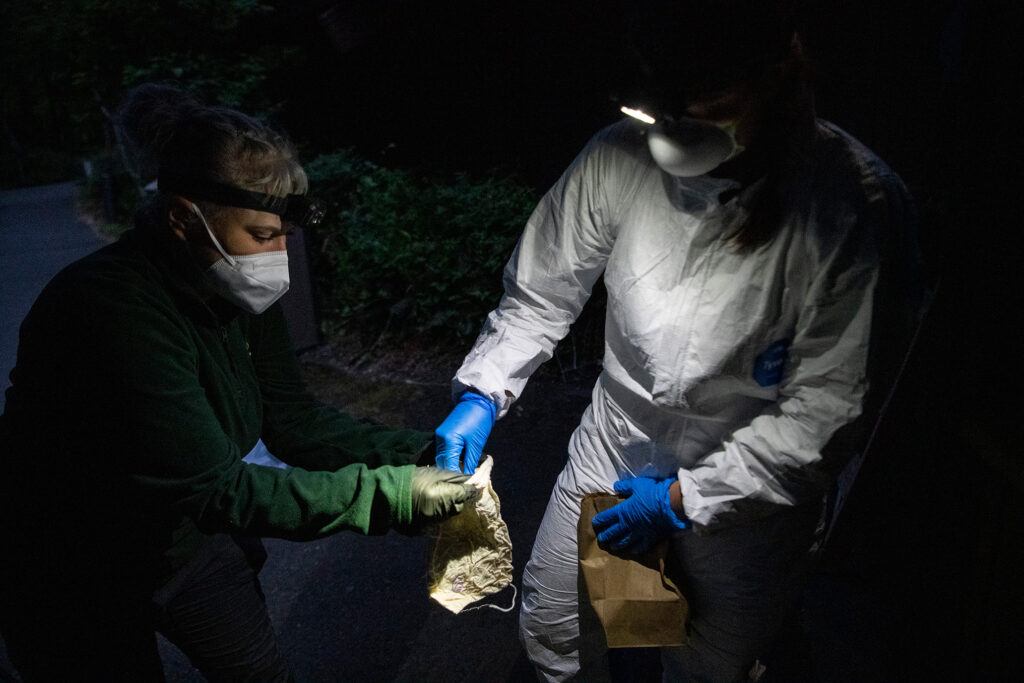
The collaboration between Northwest Trek Wildlife Park and other partners is one of optimism. The researchers hope that an innovative probiotic spray will help bats survive white-nose syndrome.
Abby Tobin, the white-nose syndrome coordinator for Washington Department of Fish and Wildlife, said if the spray proves to be effective, it could be “revolutionary” in saving bats in the Pacific Northwest and beyond. Other major partners in the research study are Wildlife Conservation Society Canada, McMaster University, Thompson Rivers University and Woodland Park Zoo.
“We love wild bats at Northwest Trek, and we’re excited to participate in this important research study to give them the best chance of survival,” said Rachael Mueller, the wildlife park’s conservation program coordinator.
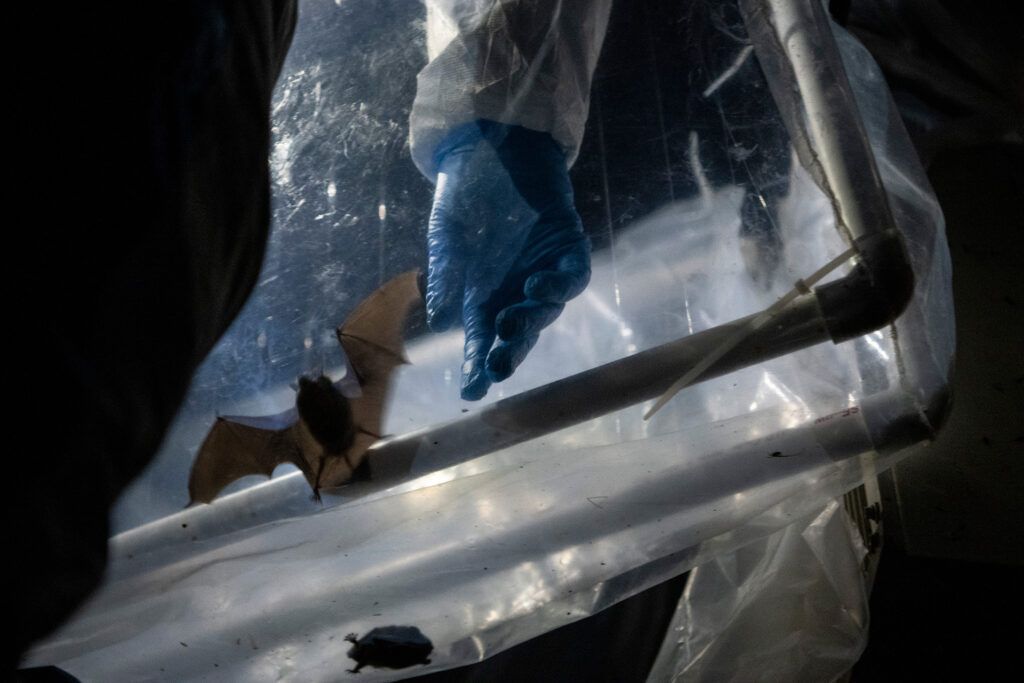
According to Tobin, the disease only affects hibernating bats and does not pose a threat to humans or other wildlife. Healthy bat populations are important for the entire ecosystem because bats eat mosquitoes, moths and other insects.
The group got to work installing a harp trap made of framing and long nylon strands. When the bats leave their maternity roost, they enter the harp trap and gently fall into a clear bag below. A researcher on a ladder scooped them up one by one to be examined.
They were each placed in cloth bags with long ties on top that are knotted and then hung inside the perimeter of two orange buckets customized with notches to grasp the strings and hold the bats. A bat waiting room, so to speak.
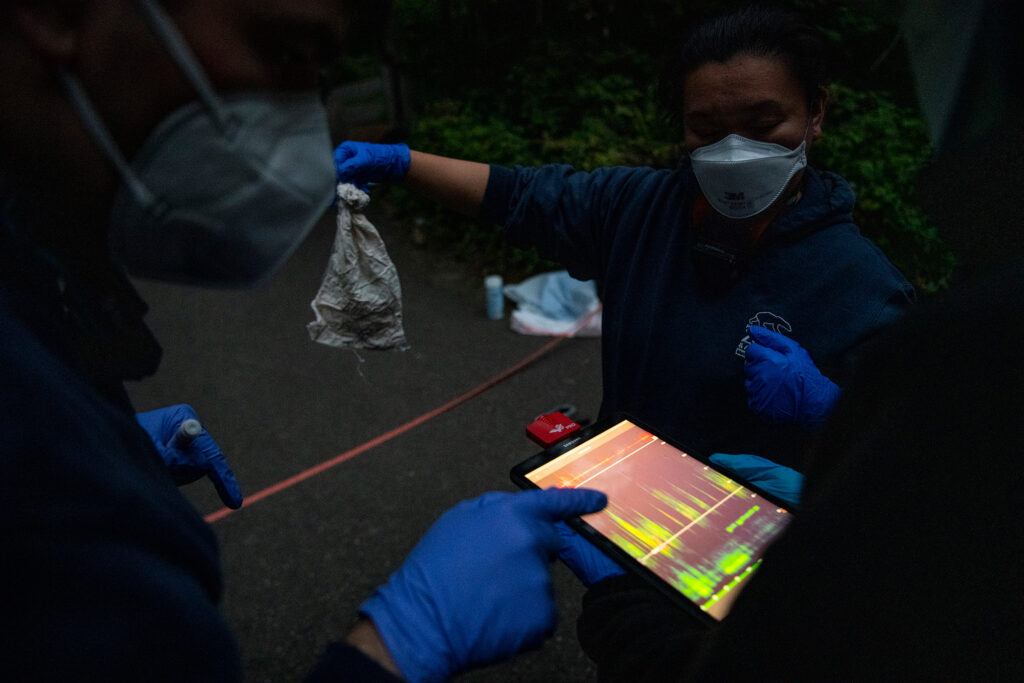
Then they gave each bat-filled bag a little shake in front of an EchoMeter to measure the frequency of its call. Each bat species has a unique echolocation frequency. The bats were identified as either Little Browns or Yuma myotis. They look similar, but their frequencies helped tell them apart in real-time.
Next, the bats were closely and carefully examined. The biologists, along with rabies-vaccinated helpers wearing headlamps, masks, gloves and protective outer gear, handled each delicate bat with loving care.
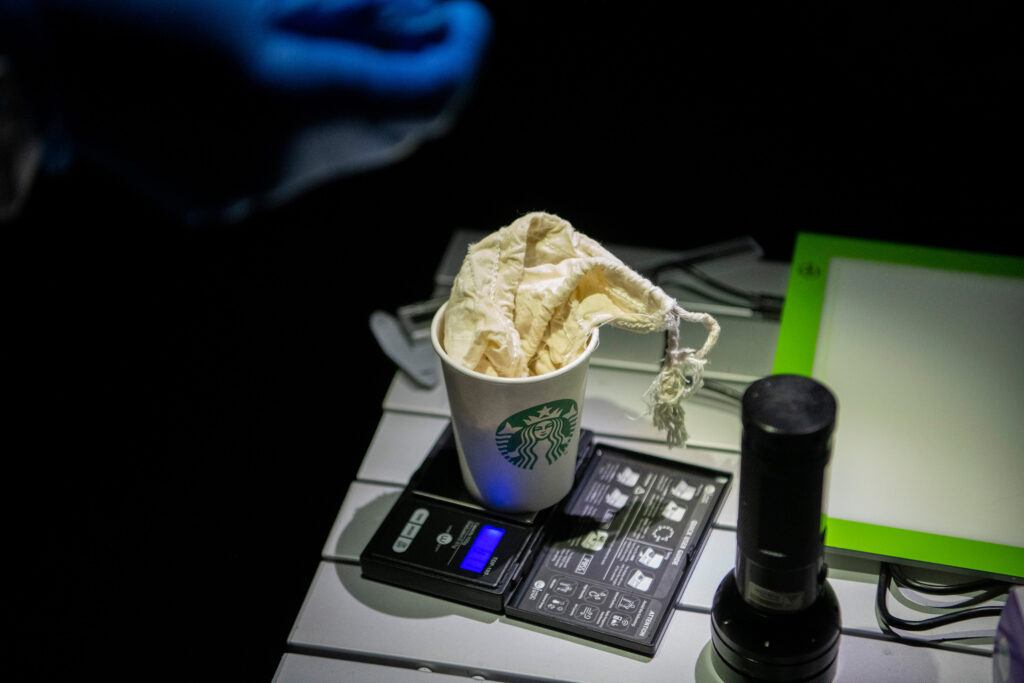
The biologists then weighed them by placing the bat-filled bag into an empty coffee cup on a tiny scale. They took their measurements, microbiome samples and reproductive information. They then carefully outstretched their tiny wings (that look and feel a bit like nylons) to look for signs of white-nose syndrome using a handheld ultraviolet light to detect orange fluorescence associated with the disease.
Bats not previously microchipped got theirs implanted under their skin, and they were all set free to continue their nightly ritual of intensive bug-eating.
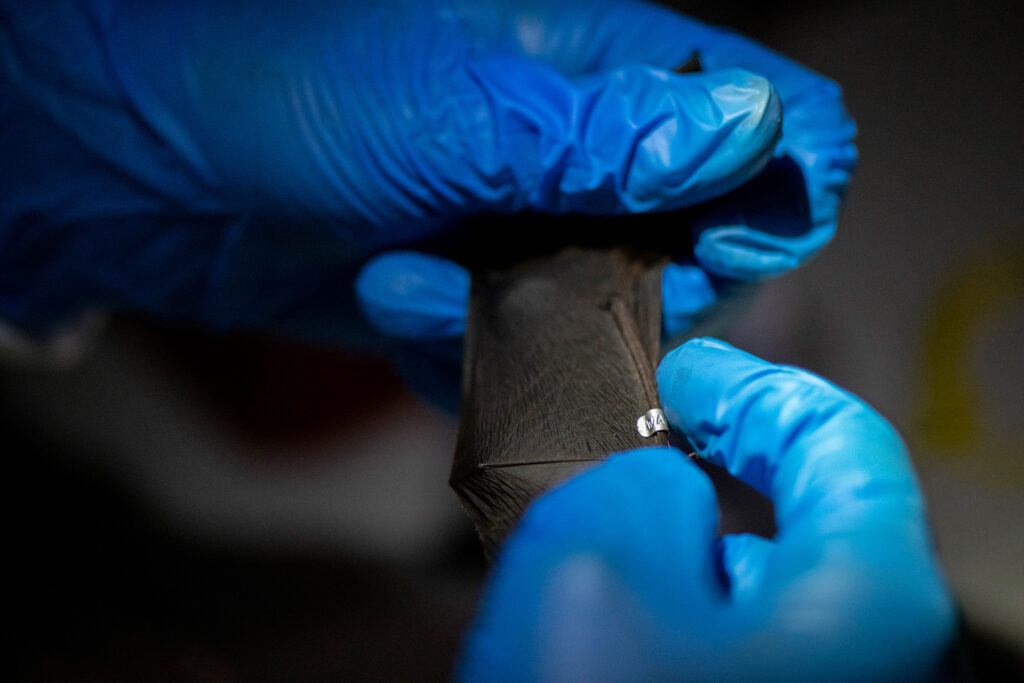
Mueller said there still is a lot to learn about white-nose syndrome and bats in general. For example, not all bats that have the fungus on them become sick with white-nose syndrome. Several species of bats have been found with the fungus but have not been affected, yet another mystery. Out east, the outbreaks hit harder than here in the west.
This was the second time Emily Butler, assistant district wildlife biologist with WDFW, had participated in the bat-catching research related to white-nose syndrome.
“I love when you get to a colony, and before they’re emerging, you can hear kind of a chitter chatter of them getting ready to go,” she said, smiling as the bats began emerging. It was exciting.
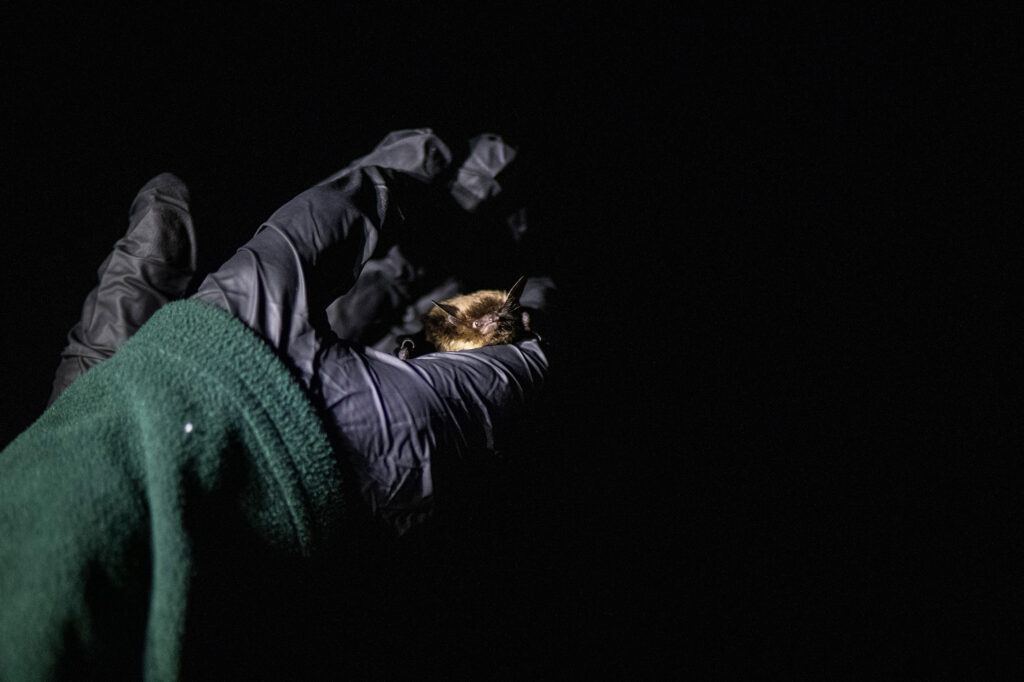
She has her fingers crossed that the probiotic spray with naturally occurring good bacteria protects the bats by inhibiting the growth of the fungus that causes white-nose syndrome, as it’s intended to do.
Bats affected by white-nose syndrome wake more frequently during the winter, causing them to burn through their fat reserves needed to survive hibernation.
During the multi-year study, researchers sprayed powdered clay containing the probiotics into the bat roosts at three other sites in Washington. The dust gets on their bodies and wings when they go inside.
Only time and continuing research will tell if it’s working. More long nights will be ahead for some very passionate people who care a lot about these often-misunderstood fuzzy flying mammals that contribute so much to a healthy ecosystem.